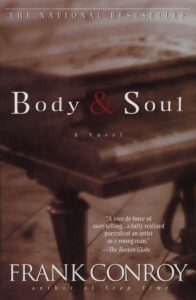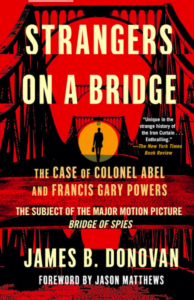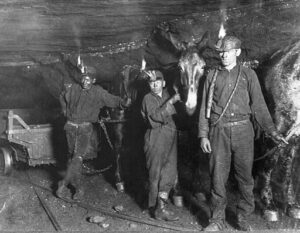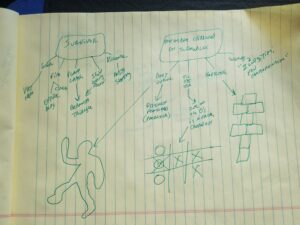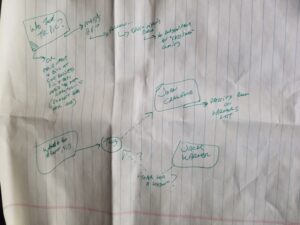What do you do to inspire yourself?
Author Archives: James Scott Bell
The Eyes Have It
by James Scott Bell
@jamesscottbell
 She put one hand behind her and flipped the snap of her halter and tossed it to the floor, staring at him with eyes of liquid smoke in which there was a curious and great disinterest. – From Here to Eternity by James Jones
She put one hand behind her and flipped the snap of her halter and tossed it to the floor, staring at him with eyes of liquid smoke in which there was a curious and great disinterest. – From Here to Eternity by James Jones
Eyes. Windows to the soul. “Traitors of the heart,” Thomas Wyatt put it. He would know. He was accused of ruffling the sheets with Anne Boleyn and got to write his poems in the Tower.
So yes, eyes are important. We look people in the eye when we meet them. (If someone doesn’t look at your eyes when they meet you, watch your back!)
It’s the same with characters, isn’t it? The reader forms a picture of a character—eyes included—whether you choose to describe them or not.
So the first decision you make is whether to include orb details at all. My own preference is to describe them for major and strong secondary characters. Most minor characters and “spear carriers” (those little one-offs needed for a scene, like a waiter or doorman) usually don’t need them.
Once we decide to describe the eyes, we usually first think of color. Something along the lines of She had blue eyes and wore a yellow dress. Functional but not memorable. More lush is Margaret Mithcell’s famous opening to Gone With the Wind:
Scarlett O’Hara was not beautiful, but men seldom realized it when caught by her charm as the Tarleton twins were. In her face were too sharply blended the delicate features of her mother, a Coast aristocracy of French descent, and the heavy ones of her florid Irish father. But it was an arresting face, pointed of chin, square of jaw. Her eyes were pale green without a touch of hazel, starred with bristly black lashes and slightly tilted at the ends.
(Note: those green peepers were so important to fans of the book that when blue-eyed Vivien Leigh was cast as Scarlett for the movie, there was an uproar. Producer David O. Selznick took care of that by having yellow lights trained on Leigh’s face in closeups, turning blue to green.)
You can add to the color by including the effect the eyes have on the viewpoint character, as in Richard Prather’s noir story “The Double Take”—
Her eyes were an incredibly light electric blue—shooting sparks at me.
Similar is the description of Hannibal Lecter in The Silence of the Lambs:
Dr. Lecter’s eyes are maroon and they reflect the light in pinpoints of red. Sometimes the points of light seem to fly like sparks to his center. His eyes held Starling whole.
David Copperfield describes the first time he saw the face of Uriah Heep:
It belonged to a red-haired person—a youth of fifteen, as I take it now, but looking much older—whose hair was cropped as close as the closest stubble; who had hardly any eyebrows, and no eyelashes, and eyes of a red-brown, so unsheltered and unshaded, that I remember wondering how he went to sleep.
While color is our natural default when describing eyes, it’s not a requirement. A popular alternative is metaphor.
His eyes were wet wounded rugs.
(Revenge of the Lawn by Richard Brautigan)He hadn’t shaved for four or five days. His nose was pinched. And his eyes were like holes poked in a snowbank. (The Long Goodbye by Raymond Chandler)
I’ve been in front of X-ray machines that didn’t get as close to the bone as that woman’s eyes. (The Name of the Game is Death by Dan J. Marlowe)
She had a lot of face and chin. She had pewter-colored hair set in a ruthless permanent, a hard beak and large moist eyes with the sympathetic expression of wet stones. (The High Window by Raymond Chandler)
Richard Matheson’s famous Sci-Fi story “Lover When You’re Near Me” takes place in the distant future on a colonized planet inhabited by creatures called Gnees.
He sat there, momentarily reflecting on her eyes. They were huge eyes, covering a full third of her face; like big glass saucers with dark cup rings for pupils. And they were moist; bowls of liquid.
I’m saving the best for last. Here is an eye description I’ve never forgotten, so perfectly did it capture a character. It’s from Darker Than Amber by the great John D. MacDonald:
She sat up slowly, looked in turn at each of us, and her dark eyes were like twin entrances to two deep caves. Nothing lived in those caves. Maybe something had, once upon a time. There were piles of picked bones back in there, some scribbling on the walls, and some gray ash where the fires had been.
The eyes have it—perhaps more than any other descriptive element they can give us a sense of who the character is and what mysteries dwell within. Use color, metaphor, and/or the effect the eyes have on the viewpoint character, and your fiction will be looking good.
How do you go about describing the eyes of your characters?
Reader Friday: Should Writing Be Easy?
“For God’s sake, don’t write unless you have to….It’s not easy. It shouldn’t be easy, but it shouldn’t be impossible, and it’s damn near impossible.” – Frank Conroy
Discuss!
How to Write Short Stories Worth Reading
by James Scott Bell
@jamesscottbell
 I love rooting around in Project Gutenberg. This amazing site has been digitizing public domain works since 1971! But wait, there was no internet then, so what gives? A visionary, that’s what. A 24-year-old grad student named Michael Hart at the University of Illinois foresaw the coming of a network of computers sharing knowledge. Gaining access to a university mainframe, he started adding digitized literary works in the public domain.
I love rooting around in Project Gutenberg. This amazing site has been digitizing public domain works since 1971! But wait, there was no internet then, so what gives? A visionary, that’s what. A 24-year-old grad student named Michael Hart at the University of Illinois foresaw the coming of a network of computers sharing knowledge. Gaining access to a university mainframe, he started adding digitized literary works in the public domain.
Thus, Hart was the inventor of the ebook. Really.
He spent the rest of his life (he died in 2011) dedicated to his project, which he called Gutenberg. And how did the books get digitized and uploaded? They were hand typed! By Hart himself and a team of volunteers. This work went on for 25 years until the coming of scanning technology. Since that time Gutenberg’s growth has exploded. It now has over 66,000 works in its collection available for free download on any reading device. Among works that have just come into public domain are Winnie-the-Pooh and The Sun Also Rises.
And not just books. Gutenberg is adding pulp magazine stories from the golden age, e.g., science fiction, detective. Also some audiobook versions. I have dozens of Gutenberg books on my Kindle.
I get their daily update and always find some interesting titles to have a look at. The other day it was Modern Essays and Stories: A Book to Awaken Appreciation of Modern Prose, and to Develop Ability and Originality in Writing by Frederick Houk Law, Ph.D., published in 1922.
Dipping inside, I came across the entry on what makes a good short story.
Brevity is the first essential of a short story, and yet under the term, “brief,” may be included a story that is told in one or two paragraphs, and a story that is told in many pages. A story that is so long that it cannot be read easily at a single sitting is not a short story.
That’s a good definition, as it includes what we now call flash fiction, and draws the line before crossing over into the novelette and novella range.
So what does a good short story do?
To make one strong impression on the mind of the reader, and to make that impression so powerfully that it will leave the reader pleased, convinced and emotionally moved is the principal aim of a good short story. To the production of that one effect everything in the story—characters, action, description, and exposition—points with the definiteness of an established purpose. All else is omitted, and thus all the parts of the story are both necessary and harmonious. Centralizing everything on the production of one effect makes every short story complete in itself. The purpose having been accomplished there is nothing more to be said. The end is the end.
Well now! If I may modestly mention my own book on the subject, How to Write Short Stories and Use Them to Further Your Writing Career, this affirms the “secret” I found by analyzing thousands of short stories. I call it “one shattering moment.”
What that moment is depends on the type of story you write. If it’s a crime or mystery story with a “twist,” that’s one kind of moment, and usually comes at the end (see Elaine’s post on that subject here).
Another type of story is the one that lays you flat with an emotional punch. Here the shattering moment may happen in the middle, as it often does in a Raymond Carver story. The emotional shattering can come at the end, as in Irwin Shaw’s classic “The Girls in Their Summer Dresses.”
Keeping one shattering moment in mind gives you all the direction you’ll need to write a short story worth reading. Just add your own stamp and creativity.
A good short story can be a gateway for readers to discover you and your full-length books. So where can you publish? There are established venues, like Alfred Hitchcock and Analog. These can be hard to crack and take a long time to hear from.
Some authors, like yours truly, use Patreon. (Hey, can I urge you to give it a try? No obligation, and I’d love to hear what you think!)
Many more use sites like Wattpad, Medium, and Comaful. Heck, you can start your own blog just for short stories.
Or why not go right to Kindle? Publish it in Kindle Select, price it at 99¢, and run a free promo every 90 days. Make sure you have links to your website and books in the back matter.
And if you can find a real bookstore with a window, you can sit there and type a story on the spot, like Harlan Ellison used to do. Ha!
Short stories and flash fiction are good ways to keep your creative muscles juiced, and offer a nice respite from full-length fiction. And if you can give readers that shattering moment, they’ll come looking for your other work!
***
BONUS: For you craft fans, I’m participating in a great StoryBundle of writing books. Check out how you can get them all at Write for the Win.
Reader Friday: Your Inner Editor
Thoughts on Publishing in 2022
by James Scott Bell
@jamesscottbell
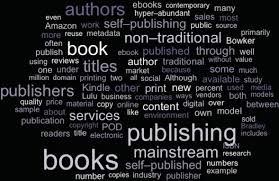 So here we are on a toboggan hurtling down the snowy mountain called 2022. Seems like a good time to take a look at the current state of book publishing, the better to avoid the rocks, tree stumps, and cliffs scattered all over the slope.
So here we are on a toboggan hurtling down the snowy mountain called 2022. Seems like a good time to take a look at the current state of book publishing, the better to avoid the rocks, tree stumps, and cliffs scattered all over the slope.
What do we see?
The Forbidden City
Looming large, as always, is traditional publishing by the Big 5. Prophecies of their demise, which were legion in the early days of the indie boom, have not come to pass. Not even a global pandemic could take the trad biz out. Yes, there have been mergers and acquisitions, the paring down of staffs, and other moves that market-wide disruption demands. But as explained by Jane Friedman in The Hot Sheet (subscription required; quoted with permission):
In 2020, traditional publishing celebrated its best sales in a decade, and 2021 will come in at even higher levels, with 8 percent growth projected by NPD BookScan. HarperCollins CEO Brian Murray claimed the book “pie” has grown by about 15 percent, and thus the company has been aggressive in their acquisitions and release schedule. HarperCollins profits were up 42 percent by mid-year, while Penguin Random House saw its best profits in 19 years, up by a whopping 55 percent during the first half.
Undeniably it has been an extraordinary and historic period of sales in the industry, with no particular books responsible; publishers are seeing strong performance across their entire lists. (Keep in mind that, for traditional publishers, the print-to-digital sales mix remains about 75-25.) The latest report from the Association of American Publishers shows that consumer (trade) publisher revenues are up 14.1 percent through October 2021 versus last year.
Publishers Lunch, which has tracked dealmaking trends for more than 20 years, saw a surge in dealmaking in 2021. Volume for the first half of the year was about 20 percent higher than in 2020—remarkably in line with the increase in US print unit sales, which were up 18.4 percent during the first half of the year, according to BookScan. Major deals and six-figure deals remain strong.
Who would have predicted this? Perhaps your humble scribe, who opined back in 2013 that traditional publishing was like a boxer who just won’t go down.
Now let us consider this from the writer’s perspective. For while the industry is still humming, the tune may be less than melodious for fledgling fiction authors. Yes, deals are still being made, but with fewer “slots” for new writers the competition is fierce. Unless one is a celebrity (who is paired with a ghost or co-author), or has written what a pub board considers a “can’t miss” debut (they’re only right about this maybe 50% of the time) advances are not hefty. In many cases they aren’t even, strictly speaking, advances. As agent Kristin Nelson explains:
In the early 2000s, every contract I negotiated specified advance payments in halves: half on signing and half on delivery and acceptance of the manuscript. An agent earns the commission at the same time a client is paid. Publishers are now citing “corporate mandates” that payments must be structured in four or five installments—and some of those payments aren’t coming in until after publication…which makes it no longer an “advance” … Not only does this structure impact an author’s financial well-being, it impacts an agent’s ability to earn a living. Imagine negotiating a contract today and knowing that a portion of your commission won’t be paid for two years.
As far as acquisitions, there is a “blockbuster mentality” in big publishing. Nice if your book is one of them and hits. If it doesn’t, your prospects for another contract with the same publisher, or another of the Bigs, dim considerably.
Over the course of the last thirty years I’ve seen a strikingly similar scenario happen over and over again. It goes like this:
- Big advance from a big publisher. A two-book contract! Huzzah! Everyone is celebrating, popping champagne, hosting the author at conference pub parties.
- Book #1 fails to live up to sales projections. Author starts getting night sweats. There is no further marketing push from the publisher.
- Book #1 is deemed a “failure.”
- Book #2, per the contract, comes out, but without robust support from the publisher or large orders from the bookstores. If the book is hardback, publisher may decide not to do a paperback print run. Instead, it “remainders” the hardcovers in the warehouse by selling them cheaply to wholesalers (and for which the author gets no royalty).
- Author is not offered another contract from the big publisher, nor from any of the other Bigs.
(A first-hand account of such a scenario can be found here.)
I must add that I do know some writers who have managed to keep long-term relations with a big publisher without being in the “mega” category. Such writers used to be called “midlist.” But that designation is rapidly disappearing. It’s more “feast or famine” now, and if you aren’t feasting in the Forbidden City, you will likely be shown the drawbridge.
Cast into the dark forest again, what is an author to do? Fortunately, there are two roads diverging in that wood—independent/small publishing and indie publishing.
Independent and Small Publishing
Many independent and small publishing concerns are doing a fine business, and more have been added over the last several years. (I note, however, that business failures happen regularly in this sector and can really mess up the author getting monies owed.) They fall into roughly two categories: those with a traditional model and those that are hybrid.
One of the biggest independents is Kensington, home of our own John Gilstrap. It operates traditionally and pays advances. Elaine Viets is with Severn House. Reavis writes for Poisoned Pen Press.
When you get down into smaller sizes, it’s most likely there is no advance, and contract terms vary wildly. Which means doing your due diligence—you can start by reading this article. You’ll likely be your own agent, so learn all you can about publishing contracts and get help before you sign anything. The Authors Guild has a contract review benefit. You can also fork over dough to a lawyer to review the contract, but make sure said lawyer knows the ins and outs of book publishing contracts and specializes in Intellectual Property Law. The general practitioner in the strip mall at the corner is not the one to consult.
I won’t say much about “vanity” publishing, which usually requires big fees along with faux guarantees like “Your book will be published everywhere on the internet! And it will be available to all bookstores, too!” (Yeah… available… thank you so much). Some even say they will make you a “bestselling author” which means playing algorithm footsie on Amazon so your ebook, selling thirty copies, makes it to the top of some obscure category. And if you want their ultra-terrific marketing package, all you have to do is pony up more dough…four figures, sometimes five.
Yeesh.
I will say, however, there is an exception to the fee-up-front model that may be right for an author of a particular sort. I counseled just such a one. He was referred to me by a family member. He is a recently retired lawyer who had written a novel and wanted advice on how to get it published.
We went back and forth with emails. I laid out the two paths—traditional and indie—and explained the formidable barriers to the former. But that’s what he wanted to go for. So I told him what to do to get his novel shipshape (beta readers, freelance editor) and showed him how to put together a proposal and begin the search for an agent.
After about eight months he wrote back saying he was ready to go indie. I told him what that entailed, the various tasks he’d have to perform. I also said he needed to think of it as a business. But he was not interested in running a business, he just wanted to get his novel published and made available.
So for such a person (i.e., one not interested in writing as a career, vocation, or serious hobby), there are companies that will take care of things like cover design, formatting and all the rest, for a reasonable fee. One of these is BookBaby. After due diligence, that’s what he chose.
Indie Publishing
As we all know, an ever-growing number of authors—several of whom you’ll find right here at TKZ—are successfully publishing on their own. Some have gone indie from the jump, while a multitude of former trad writers have transitioned over, attracted by benefits that include full creative control, generous royalty rates, and seeing their book published as soon as it’s finished instead of a year or 18 months down the line.
But to do this successfully you have to think like a business (a simple business plan is presented in my book How to Make a Living as a Writer), consistently produce quality work, and be patient. One decision you’ll need to make early is whether to “go wide” or “go exclusive.” The nice thing is your choice is not irrevocable. Being indie means you can try new things, experiment, and make better decisions as you grow.
So where are we, O writer? Recognizing that there are exceptions to every publishing generality, let me offer a few words of advice.
- If you are an author who desires acclaim from established venues of literary acceptance and a chance to break out into the rarified air of mega A-List writers, traditional is your shot. Just know that the odds are steep—98% of books published traditionally sell fewer than 5,000 printed copies. It’s a gamble and it may take you years to get a chance at the table. Yet people still play 22 in roulette, and you are certainly free to try. Once your chips are gone, however, you will probably find it impossible to get staked again for another turn inside the Forbidden City.
- A good, independent publisher is an alternative—so long as your monetary goals are modest. The key word is good. Do your research.
- Big or small, fight for a fair reversion clause in your contract. By fair I mean tied to a minimum number of dollars (not “copies available”) in a royalty period. Shoot for a high three figures.
- Also get a fair non-compete clause.
- If you decide to go indie because you think it is a fast road to riches, think again. It will take several years to get a good income flow, and even then it may not be a raging river of green. Still, you own all rights to your hard work and you can’t be fired. If you love to write (and you should if you want to make a go of this) then even a modest side income is frosting on the cake.
- Whatever your choice, make it your goal to get better every time you sit at the keyboard. Study the craft, write, get feedback, write, study, try things, get more feedback, write.
- Find your productive sweet spot. Figure out how many words you can produce comfortably in a week. Whatever that number is, up it by 10% and make that your goal, breaking it down into daily production, six days a week. Take one day off each week for rest and recharging.
- Have a regular creativity time. Be like a movie studio and have several projects “in development.”
That’s how I see the publishing biz in 2022. Let’s open up a conversation on all this. How do you see things? What decisions are you contemplating? What lessons have you learned over the past few years?
Reader Friday: What Are You Reading?
We’ll Be Back
Merry Writing and a Snappy New Year
by James Scott Bell
@jamesscottbell
’Tis the season to be jolly.
Or is it?
One view is offered by Mr. Scrooge:
“Every idiot who goes about with ‘Merry Christmas’ on his lips, should be boiled with his own pudding, and buried with a stake of holly through his heart.”
Thanks, Eb.
At the other end of the spectrum is his clerk, Bob Cratchit:
Then Bob proposed: “A Merry Christmas to us all, my dears. God bless us!”
Which all the family re-echoed.
“God bless us every one!” said Tiny Tim, the last of all.
So what’s it gonna be? You gonna be merry or what? (Why do I sound like I’m grabbing your shirt?)
My favorite dictionary is Webster’s New Collegiate (1960). I have two copies, hoping somehow to preserve the language from the unrelenting lingual onslaught of these latter days. I’ll be the one standing on a hill, waving them around, shouting, “Try and get ’em! Just try!” (Please bury me next to a small town library.)
Here is the definition of Merry:
adj. 1. Pleasant; delightful; of sounds, etc., sweet; of a wind, favorable. 2. Mirthful. 3. Amusing; funny. 4. Marked by gaiety or festivity.
Who doesn’t think we need a little more merriment these days? In life and in writing.
I’ve quoted this before but it’s worth another look:
In the great story-tellers, there is a sort of self-enjoyment in the exercise of the sense of narrative; and this, by sheer contagion, communicates enjoyment to the reader. Perhaps it may be called (by analogy with the familiar phrase, “the joy of living”) the joy of telling tales. The joy of telling tales which shines through Treasure Island is perhaps the main reason for the continued popularity of the story. The author is having such a good time in telling his tale that he gives us necessarily a good time in reading it. — Clayton Meeker Hamilton, A Manual of the Art of Fiction (1919)
How do you get that merriment into your writing? One way is to get so invested in your characters that you can’t wait to see them live and breathe. I believe it was Dwight Swain who advised that whenever your tale is getting to be a slog, do some character work until you get excited again—and you always will.
Another method: Pause occasionally in your plot and ask How can things get worse? That’s how we novelists really get merry—by coming down even harder on our characters!
Another thing you can do is pitch your story to a friend or loved one. I don’t mean the 30-second elevator gab. I mean tell them the story right up to where you are in the manuscript. Try to notice two things:
- Are you enjoying telling the story?
- Is your audience rapt? Or are they squirming around like they want to check their phones?
Use the answers to these questions to fix what needs fixing. That brings its own kind of joy.
And a Snappy New Year.
snappy, adj., 1. Snappish. 2. Colloq. Full of snap, or life, briskness, pungency, smartness, etc.; as, snappy conversation.
Apply this to your social media. We know that we have to be “out there” in some fashion. Agents and publisher expect it. So do readers. The temptation is to blunder around without thought or plan, thinking that the world is waiting with bated breath to hear whatever jumps to the top of your head five seconds ago.
It isn’t.
Revisit Sue’s advice on these matters. As she notes: “Always conduct yourself as a professional, but don’t hide the real you while doing it. There’s so much garbage and negativity on social media.”
So be brisk, snappy, funny, pungent. If you share an opinion, do it with style and even a little humor. Be someone who’d be a welcome guest at any gathering.
Don’t be a dullard, a dolt or a diva.
Hey, how’s that for a snappy ending to TKZ 2021?
Thank you for all your support over this last, challenging year. I speak for all of us at TKZ when I say your hearty and helpful comments create a welcome oasis in the vast internet wilderness. It’s a pleasure to commune with you each day on all things writing and publishing.
We now take our annual two-week hiatus. May this season be full of abundant blessings for you and yours.
See you right back here on January 3, 2022!
How to Write When You’re Not Writing
by James Scott Bell
@jamesscottbell
We’re writers. We know what that means. We’re always on the job. Our minds, often apart from our intentions, keep the story wheels churning.
Like when we go to comfort a loved one in a time of need. We take their hand and issue words of consolation, while our writer mind is thinking, This would make a great scene. I wonder how I can work it into a book?
Nothing to apologize for. It’s how we roll. We write even when we’re not at the keyboard. So why not be intentional about it? Here are some of the methods I use to incentivize the Boys in the Basement:
Mind Mapping
We all know about brainstorming. That’s where we let the mind run free, without judgment, generating as many ideas as possible. The best way to get good ideas is to get lots and lots of them and only later cast aside the least promising ones.
I have found that a great aid to brainstorming is the mind map. Mapping is a way to visually link the random thoughts you jot down into some level of coherence. (A good book on this process is Writing the Natural Way by Gabriele Lusser Rico.)
I use mind maps in two ways. First is to get ideas for flash fiction and short stories for my Patreon community. I often use a nifty set of cards called The Storymatic. Their ad line is “Six trillion stories in one little box. Which one will you tell?” It’s a set of 500 cards of two types. One type is a setting or situation, the other is a kind of character. I’ll draw one of each at random and put them together to see what comes up.
The other day I drew the cards “Survivor” and “Message in chalk on sidewalk.” I wrote those down on opposite sides of a page and circled them. Then I began the map. Here’s what it looked like (click to enlarge):
As I went along I kept coming back to the doodle of the chalk drawing. The Boys were trying to tell me something. I listened, and an idea for a short story popped up. As I pondered a little more I dropped the Survivor part altogether (you’re not wedded to anything when you mind map) and in a few minutes had the complete concept.
The other way I map is when I have a particular plot problem to work out. I’m finishing up a novelette in my Bill Armbrewster series about a Hollywood studio troubleshooter in the 1940s. As I closed in on the ending I realized there was a key element earlier in the story that needed clearing up. It involved the filching of a photo from a movie star’s dressing room (Bette Davis’s, to be exact.) So on paper I wrote “Who stole the pic?” and started mapping. In a few minutes I had my answer.
Sound and Music
I know some writers who want silence as they type. But for creativity there is research that suggests a little ambient noise helps. When I’m in my office I usually put on Coffitivity or New York street sound.
Often I’ll do my mind mapping while listening to music. If I’m thinking of suspense—which is most of the time—I’ll put on a playlist of suspense movie soundtracks (my favorite being the Hitchcock scores of Bernard Herrmann). I have other lists of soundtracks that stir up other emotions.
I don’t usually use music with lyrics for this, but I understand a certain Mr. King used to crank up the rock for his work. So I’ll make occasional use of the greatest rock era of all time—the 1970s (go ahead, try to prove me wrong).
Bedtime Prompt
Nice thing about the Boys is that they don’t take time off. So give them direction at night.
If you’re working on a novel, spend five concentrated minutes just before shut eye thinking about the plot, characters, or a scene.
Sometimes I’ll write a problem down on a pad on my bedside table. What is Romeo going to do about the bomb?
In the morning, as soon as possible, write down whatever is bubbling in your head, even if it doesn’t make sense at first. Somewhere in there is a message to you, though it may be in code!
Quiet Mind
I wonder if you’ve noticed a slight increase in stress levels these days.
Ahem.
We’ve all been there. We’ve all had days when we make the coffee nervous. As I pointed out in a previous post, all the mental effort that goes into navigating the mandate marshlands takes a toll on our creativity and writing energy.
Add to that the constant stream of vitriol spewing out of every communicative orifice in our civilized nation, and you’ve got a recipe for potential creative shutdown.
So what can you do? You can quiet your mind a couple of times a day. A popular practice for this is mindfulness.
Mindfulness isn’t some mystic practice that requires a robe and the lotus position. You won’t end up in a Tibetan monastery (unless you really want to). It’s just a way to practice calming down. In old movies the usual step was some guy saying, “I need a drink.” Many follow that path even now. Better is 10-15 minutes of mindfulness. Plus, instead of a hangover, you’ll get a burst of creativity afterward. Four ways I’ve done it:
Sitting: Sit in a comfortable spot, with your back straight (not leaning against the backrest). Feet flat on the floor, hands resting on your legs. Breathe easily in through your nose and out through your mouth. Listen to your breathing. Note the way your abdomen and chest move. Find an object in the room to concentrate on. Look at it, noting everything about it. Don’t analyze it, just look at it. It’ll be hard to do this at first. Your thoughts will easily distract you (“I have to remember to go to the store…Where did I leave my reading glasses?…Did The Rock really make another movie?”). When that happens, recognize you’ve had the thoughts and gently return to breathing and concentrating.
Walking: Don’t mistake this for taking a walk for exercise. Instead, you only need a small space outside. I walk around my pool. Do it slowly, nose-mouth breathing, noticing whatever is around you.
Driving: (Especially helpful in L.A. traffic.) Instead of grumbling about being late, breathe easy and focus on the taillights in front of you. Notice their design and texture. Make sure you’ve turned off talk radio and the news. Ignore bumper stickers.
Waiting in Line: Instead of grousing how long your line is—or how all the other lines seem to move faster—be grateful for the opportunity to have some quiet time. Don’t pick up a People magazine to see if Kim and Kanye are getting back together. Just breathe easily and note all the colors you see in the objects around you.
These are some of the ways I write when I’m not writing. What have you noticed about your own time away from the keyboard? When do ideas tend to pop up from the basement? Do you do anything to incentivize the Boys?

